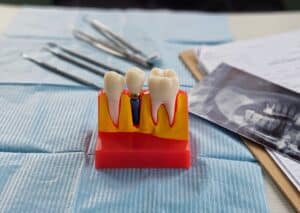Resolve to Restore Your Smile
Have your pearly whites lost their luster because of dingy gray or yellow stains? Stained teeth can occur as we age, but some common foods, drinks, and even mouthwashes can stain teeth. Do-it-yourself remedies can help whiten teeth, and avoiding substances that stain teeth can stop further discoloration. Use these secrets to whiter teeth to restore your bright smile.
- Go on a white-teeth diet
If you’re quaffing red wine and black tea, or smoking cigarettes or cigars, expect the results to show up as not-so-pearly whites. Other culprits to blame for dingy teeth include colas, gravies, and dark juices. Bottom line: If it’s dark before you put it in your mouth, it will probably stain your teeth. Brush immediately after eating or drinking foods that stain teeth and use a good bleaching agent, either over-the-counter or in the dentist’s office.
- Chuck your toothbrush…
…or change the head of your electric toothbrush at least every two to three months. Otherwise, you’re just transferring bacteria to your mouth. The best way to brush is by placing your toothbrush at a 45-degree angle against your gums and gently moving it in a circular motion, rather than a back-and-forth motion. Grip the toothbrush like a pencil so you won’t scrub too hard.
- Clean your tongue
Use a tongue scraper every morning to remove tongue plaque and freshen your breath. One major cause of bad breath is the buildup of bacteria on the tongue, which a daily tongue scraping will help banish. Plus, using a tongue scraper is more effective than brushing your tongue with a toothbrush.
- Eat ‘detergent’ foods
Foods that are firm or crisp help clean teeth as they’re eaten. Apples are known as nature’s toothbrush; other choices include raw carrots, celery, and popcorn. For best results, make ‘detergent’ foods the final food you eat in your meal if you know you won’t be able to brush your teeth right after eating. Also, foods such as celery, apples, pears, and carrots trigger lots of saliva, which helps wash away food debris on your teeth. Chewing sugarless gum is a tooth-cleansing action and also triggers saliva. A bonus from all that saliva: It neutralizes the acid that causes tooth decay. With teeth, more saliva is better all around.
- Gargle with apple cider vinegar
Do this in the morning and then brush as usual. The vinegar helps help remove stains, whiten teeth, and kill bacteria in your mouth and gums.
- Brush your teeth with baking soda once a week
This will remove stains and whiten your teeth. Use it just as you would toothpaste. You can also use salt as an alternative toothpaste. Just be sure to spit it out so it doesn’t count as sodium intake! Also, if your gums start to feel raw, switch to brushing with salt every other day.
- Stay fresh
To check the freshness of your breath, lick your palm and smell it while it’s still wet. If you smell something, it’s time for a sugar-free breath mint. Shopping for mouthwash? Make sure it is alcohol-free. Most over-the-counter mouthwashes have too much alcohol, which can dry out the tissues in your mouth, making them more susceptible to bacteria.
- Practice flossing with your eyes shut
If you can floss without having to guide your work with a mirror, you can floss in your car (but not while driving!), at your desk, while in bed, and before important meetings. In which case, buy several packages of floss and scatter them in your car, your desk, your purse, your briefcase, your nightstand.
- Brush your teeth when you first get out of bed and before you get back in at night
They’re the two most crucial times, says Kathleen W. Wilson, M.D., an internist at the Ochsner Health Center in New Orleans and author of When You Think You Are Falling Apart. That’s because saliva (which keeps cavity-causing plaque off teeth) dries up at night, so it’s best to have all plaque cleaned off the teeth before sleep. It’s also important to brush first thing in the morning to brush off plaque and bacteria (morning breath!) that may have built up as you slept.
- Whitening toothpastes and rinses
How to get stains off your teeth? Over-the-counter toothpastes, gels, and rinses help remove some surface stains. Many of these products contain mild abrasives, chemicals, or polishing agents. Unlike bleaches, they don’t change the natural color of teeth.
- Tooth whitening and dental work
Approach tooth whitening with caution if you have lots of dental veneers, bonding, fillings, crowns, and bridges. Bleach will not lighten these manufactured teeth – meaning they will stand out among your newly whitened natural teeth. In order to match your whiter teeth, you may need to investigate new dental work, including veneers or bonding.
- Preventing Teeth Stains
As we age, the outer layer of tooth enamel wears away. The underlying layer, called dentin, is yellower. That’s why it’s important to try to avoid staining teeth in the first place, especially after whitening. If you take care with foods and drinks that discolor teeth, the results of whitening may last up to one year. Whitening teeth too often could make them look translucent and blue, so you’ll want to maintain your new smile.
Source: WebMD, Readers Digest (Stealth Health)


